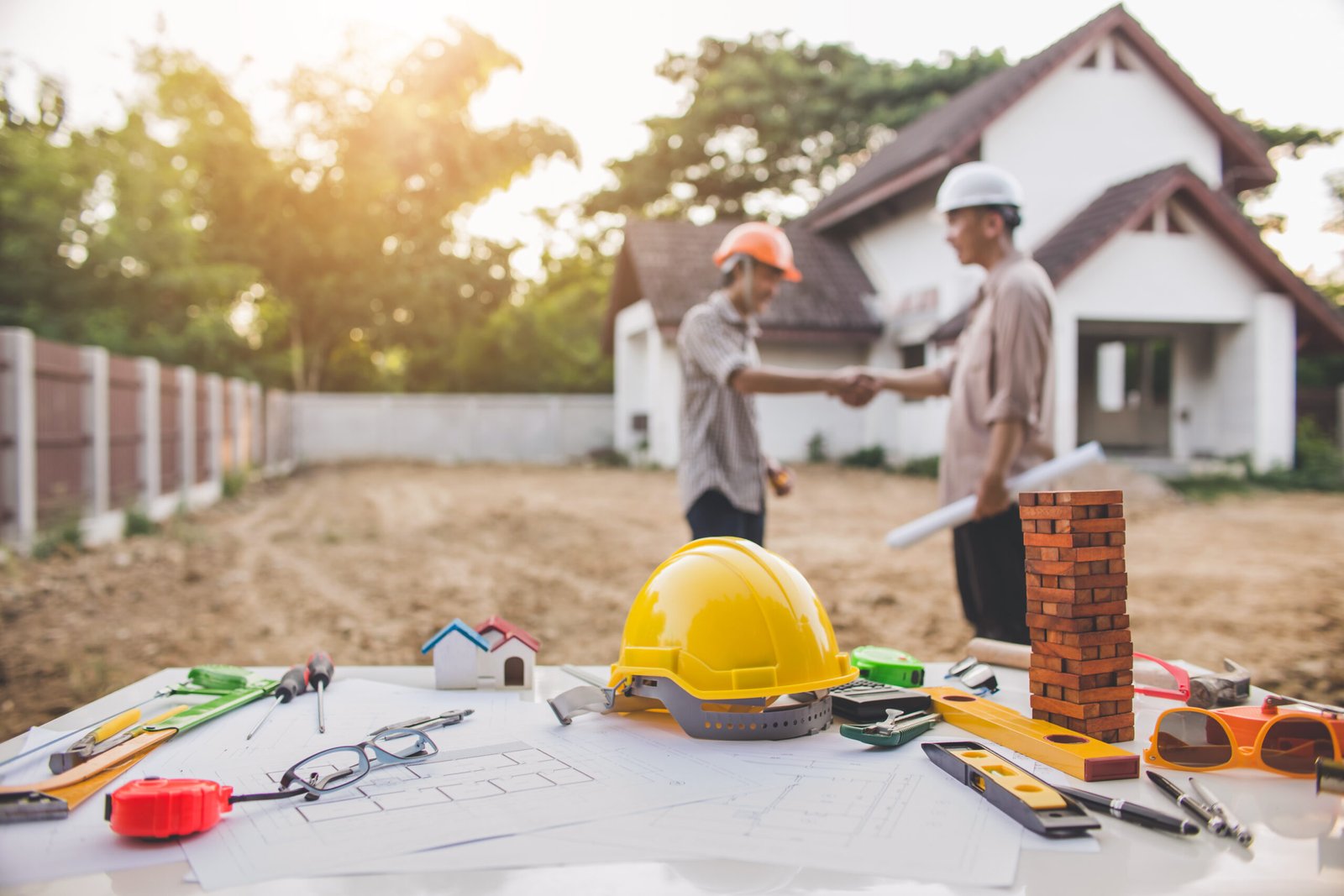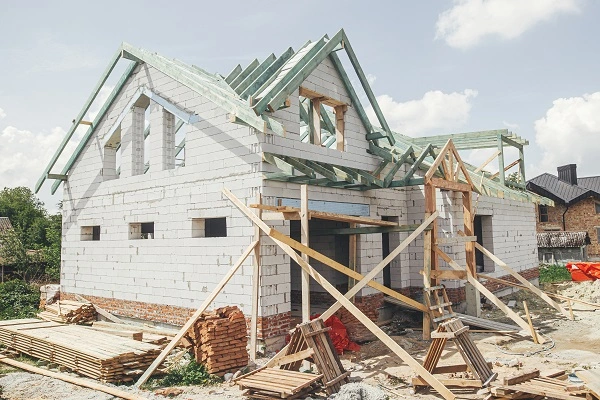Global construction spending is estimated to be above $10 trillion annually, with a 4.2% growth rate currently in place. This enormous number demonstrates the scope and complexity of the building sector. It emphasizes how crucial precise cost prediction and risk management are. One major factor that has developed in enhancing construction costs and risk assessments is artificial intelligence (AI).
AI in construction is different from conventional planning and budgeting techniques. AI revolutionizes construction cost estimating services by predictive analytics. Predictions are no longer just dependent on conjecture or historical data. A range of data is used by machine learning algorithms, including knowledge from previous projects and site circumstances. This improves precision and encourages proactive risk mitigation.
Artificial intelligence (AI) and construction estimation software alerts users to possible problems before they become costly. It depends upon past statistics and project parameters like size and contract type. This improves estimate accuracy while enabling real-time monitoring and quick problem-solving.
As a result, there’s a greater chance that projects will stay within budget and schedule. In building companies, AI technologies, such as Building Information Modeling (BIM), provide more efficient planning and improved decision-making.
Overview of Artificial Intelligence in Construction Cost Estimation
The introduction of AI is changing how cost estimating is done in the building industry. Conventional methods rely on historical data and experience but frequently fail because of errors. In contrast, AI improves cost estimation accuracy and efficiency. By 2026, the worldwide construction market is expected to have grown to more than $22 billion. This increase suggests that AI advancements will play a bigger part in this industry.
An Historical Angle
The use of AI in construction cost estimates began with simple algorithms that emulated human knowledge. However, these systems initially had trouble with arbitrary choices and sluggish processing speeds. Data analytics and machine learning developments have significantly increased the capacity of building cost estimation tools. AI has enhanced our commercial and residential estimating services.
Problems with Conventional Approaches
Conventional cost estimate has several challenges. It’s extremely sluggish, and during the preconstruction stages, it costs businesses over $66,000 per contractor yearly. These techniques are neither flexible nor quick enough to efficiently examine large amounts of data. As a result, there are frequent delays and inaccuracies.
- Inconsistent estimates might result from subjective assessments.
- The cost-estimating procedure takes longer when done manually.
- Making quick, well-informed decisions is hampered by inadequate data analysis.
Artificial intelligence (AI) techniques and construction cost prediction software are tackling these issues. They provide predictability and fast, data-driven cost modelling with an accuracy record of 97%, and AI estimations considerably lower human error and overspending. They raise the bar for the industry as a result.
AI significantly reduces time by allowing construction takeoffs to be finished in seconds. This leads to 80% faster takeoffs and a 90-minute savings per sheet. Businesses that use AI might see a 50% increase in production because of better project management and instantaneous data analysis. This tremendous advancement leads the building sector to unprecedented precision and efficiency. Leading companies today recognize the importance of AI in estimating building costs.
Recognizing the Drawbacks of Conventional Estimating Methods
Maintaining profitability and viability in building projects requires accurate cost estimation. However, there are several drawbacks to standard building cost-estimating methods, including subjectivity, time commitment, and rigidity. These restrictions make projects less accurate and efficient, leading to delays and overspending.
Human fallibility and subjectivity
Conventional estimation techniques, such as unit cost analysis and square footage estimation, rely on human judgment. This dependence results in mistakes and inconsistencies. Lack of uniformity is detrimental, particularly when accurate budgeting is essential. This results in estimations that are not always in line with real needs.
Time-Dependent Procedures
Conventional techniques are labor-intensive and sluggish. They necessitate continuous consultation with past data and complex manual computations. Efficiency is further slowed by the requirement to revise estimates often to reflect changes in the project scope. This old-fashioned method invariably leads to delays, impeding prompt choices and updates.
Restrictions and Inadequate Data Analysis
Traditional methods are inefficient in part because they cannot change to meet the demands of a project as it changes. Their lack of analytical skills limits their applicability to complicated undertakings. Inadequate data analytic skills hamper the integration of real-time cost data and predict possible financial bottlenecks.
Variations in the market:
Budget errors result from traditional approaches’ inability to keep up with the quick changes in market prices.
Manual updates: Changes in scope need much reworking, which can cause delays in project completion deadlines.
Absence of automation: The efficiencies offered by contemporary cost estimate technologies are lost on traditional approaches.
Machine Learning’s Place in Predicting Construction Costs
Construction cost analysis is being revolutionized by machine learning. It improves cost projections by adding accuracy and consistency. It finds trends and makes precise cost projections by examining large datasets. This lowers the possibility of going over budget.
Automated Learning Systems
Three primary categories of machine learning models are utilized in the prediction of construction costs:
Supervised learning involves training on labelled data while anticipating the result.
Unsupervised learning: Analyzes unlabeled data to identify patterns without anticipating the result.
Reinforcement learning adjusts depending on input and learns by making mistakes.
Instruction Using Past Data
The construction industry’s use of machine learning depends on historical data. Algorithms use historical data to identify patterns. By examining prior projects, apps such as construction management software enhance estimates. This makes it easier to forecast future costs.
Increasing Predictive Precision Gradually
Machine learning algorithms improve their prediction power through continuous learning. To improve estimations, they consider fresh data.
AI can automate 50–60% of repetitious BIM work. Better project management and cost estimates result from concentrating human resources on more strategically important activities.
AI-Powered Construction Cost Estimation’s Advantages
The use of AI revolutionizes construction cost estimates. It quickly processes large datasets and produces more accurate projections by analyzing historical data and market patterns. As a result, AI outperforms conventional techniques by reducing the amount of manual labor required, which improves effective project planning.
AI’s Drawbacks and Obstacles in Construction Estimation
Although integrating artificial intelligence (AI) into building cost prediction has a lot of potential, there are plenty of obstacles to overcome. Understanding these challenges is essential. It allows for the maximum utilization of AI’s positive effects while reducing its drawbacks.
Problems with Data Availability and Quality
AI in construction estimate requires high-quality, easily accessible data. AI and machine learning (ML) algorithms require comprehensive, accurate datasets for precise estimations. Inadequate data quality can lead to inaccurate projections and poor decision-making. Ensuring data availability and integrity is crucial to the effective use of AI tools.
Initial Expenses of Implementation
One major obstacle is the initial cost outlay for building estimates using AI and ML. This includes the cost of expensive software and hardware and data science knowledge requirements. It also covers the price of staff training.
Collaboration Between Humans and AI
Fostering a robust human-AI construction partnership is essential to addressing issues in AI construction estimating. It’s crucial to balance human intuition and AI’s capabilities. Humans are critical to understanding particular project demands and making moral decisions. To allay skepticism and opposition, increasing trust in AI systems is critical.
Summary
Artificial Intelligence is causing a significant change in the rapidly evolving construction industry. Artificial Intelligence (AI) is revolutionizing building cost estimation. This system efficiently handles complicated data, predicts future trends, and reduces mistakes significantly.
AI’s biggest advantage is the fastest and most effective estimation method. Weeks-long tasks can now happen in a matter of minutes. AI’s speed and capacity to compile diverse data sets give it power. Better planning and risk management result from this.
The benefits outweigh the drawbacks, including opposition to new technologies and sophisticated infrastructure requirements. Businesses using AI claim significant improvements.





